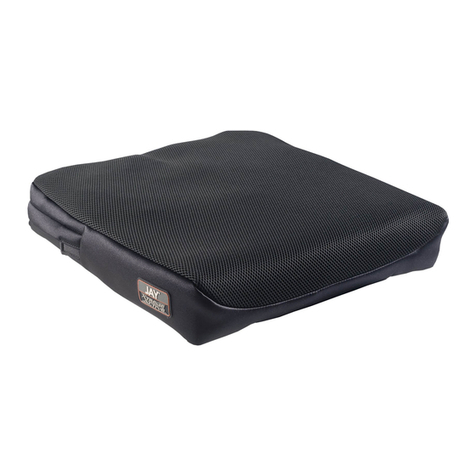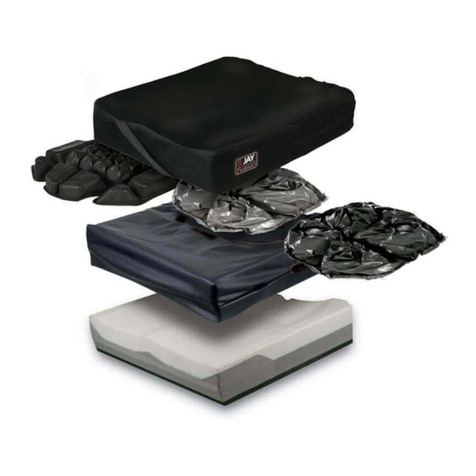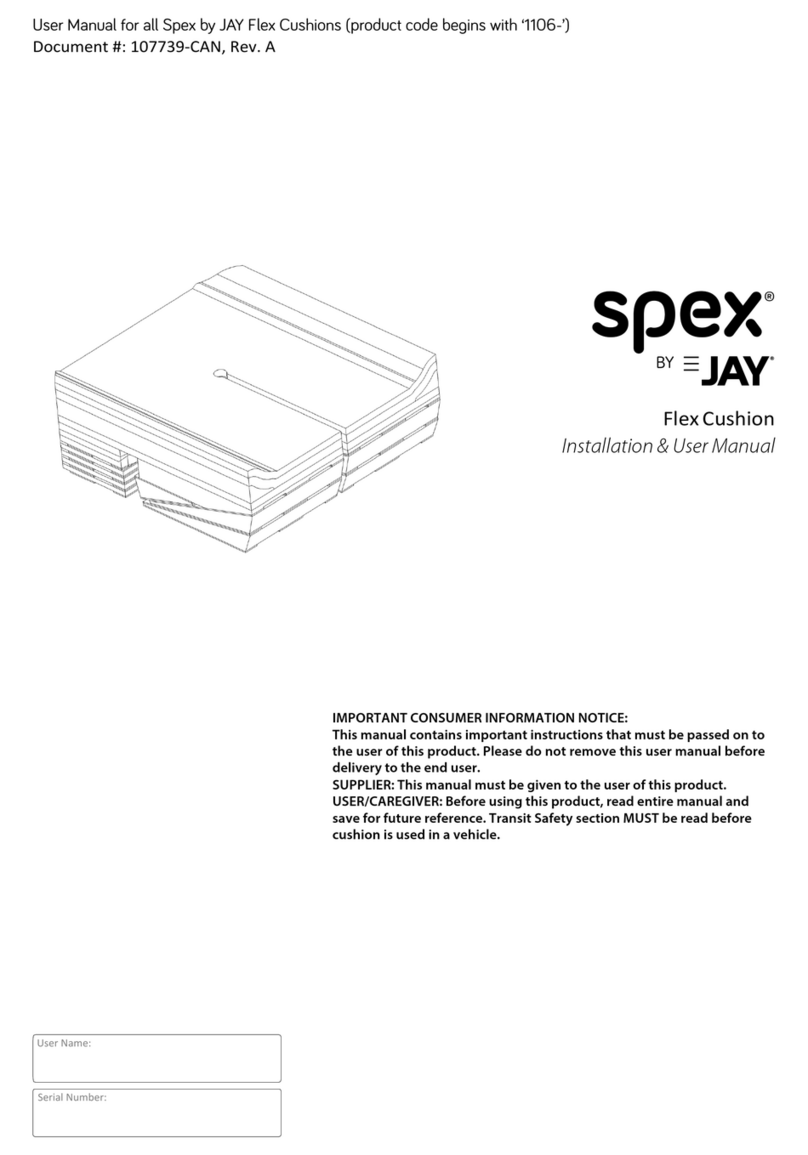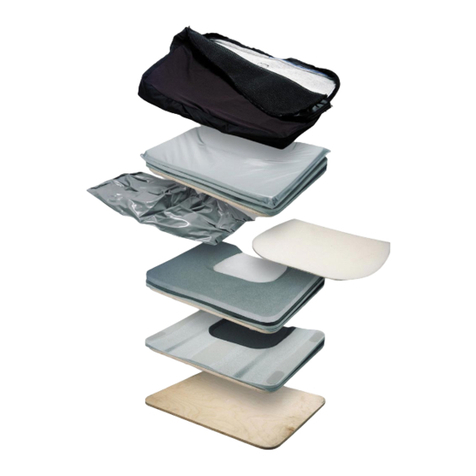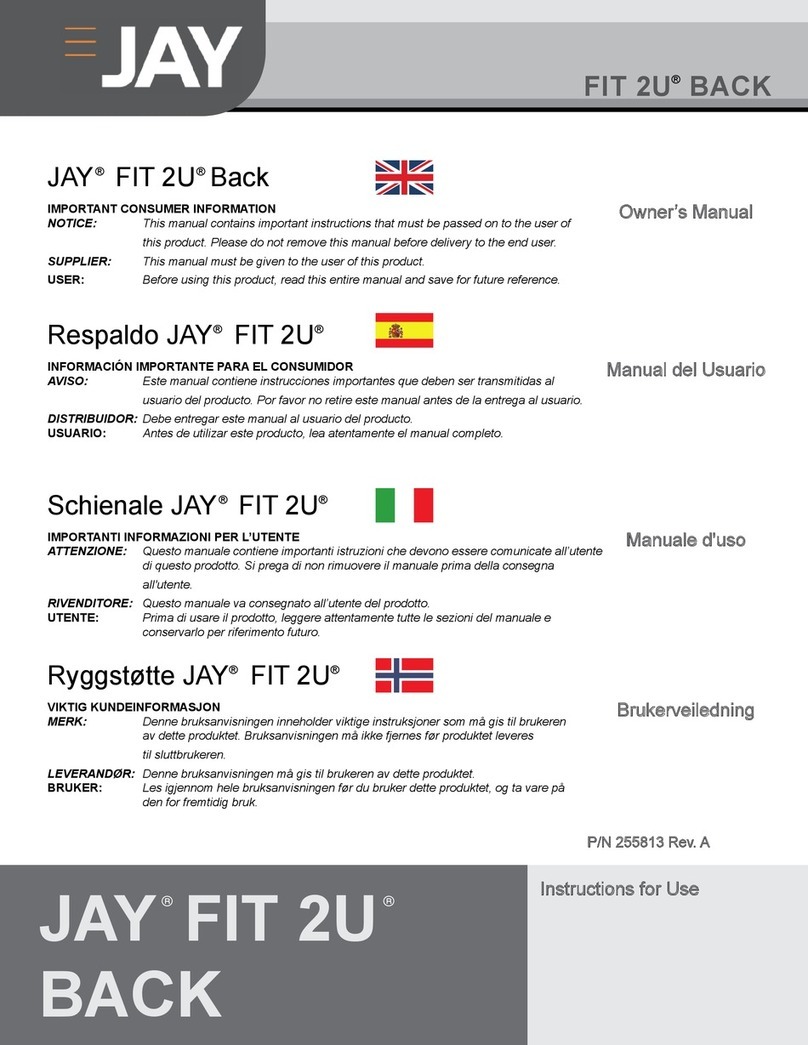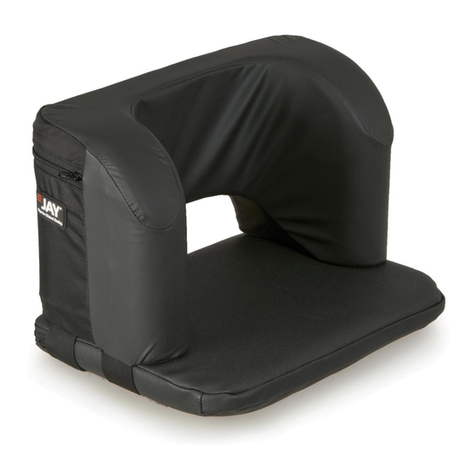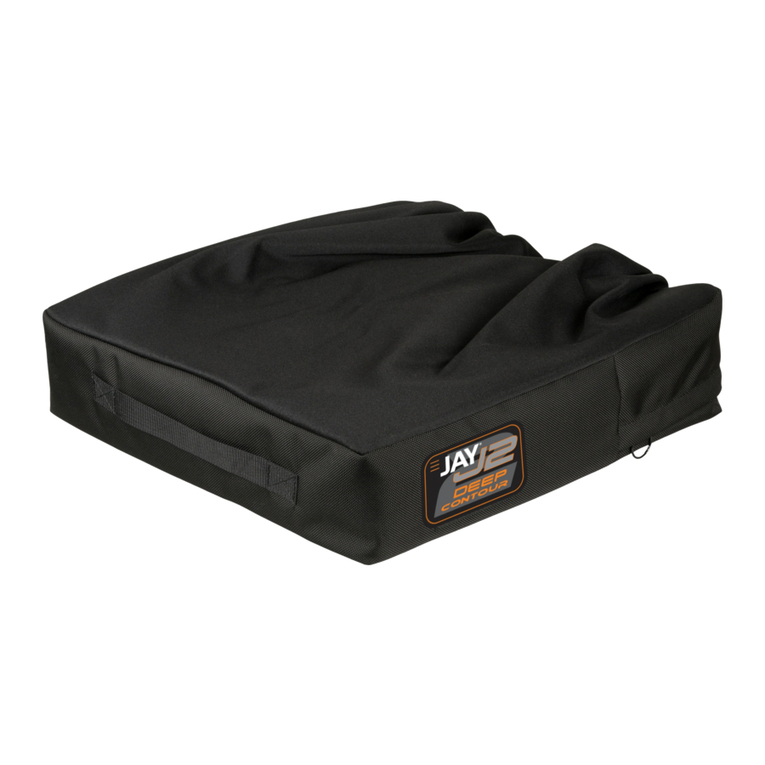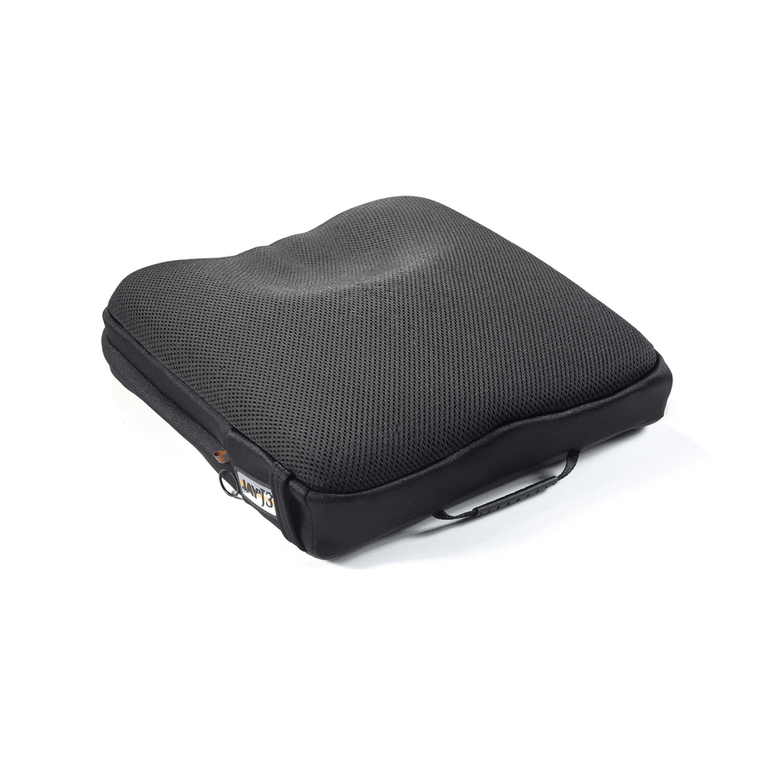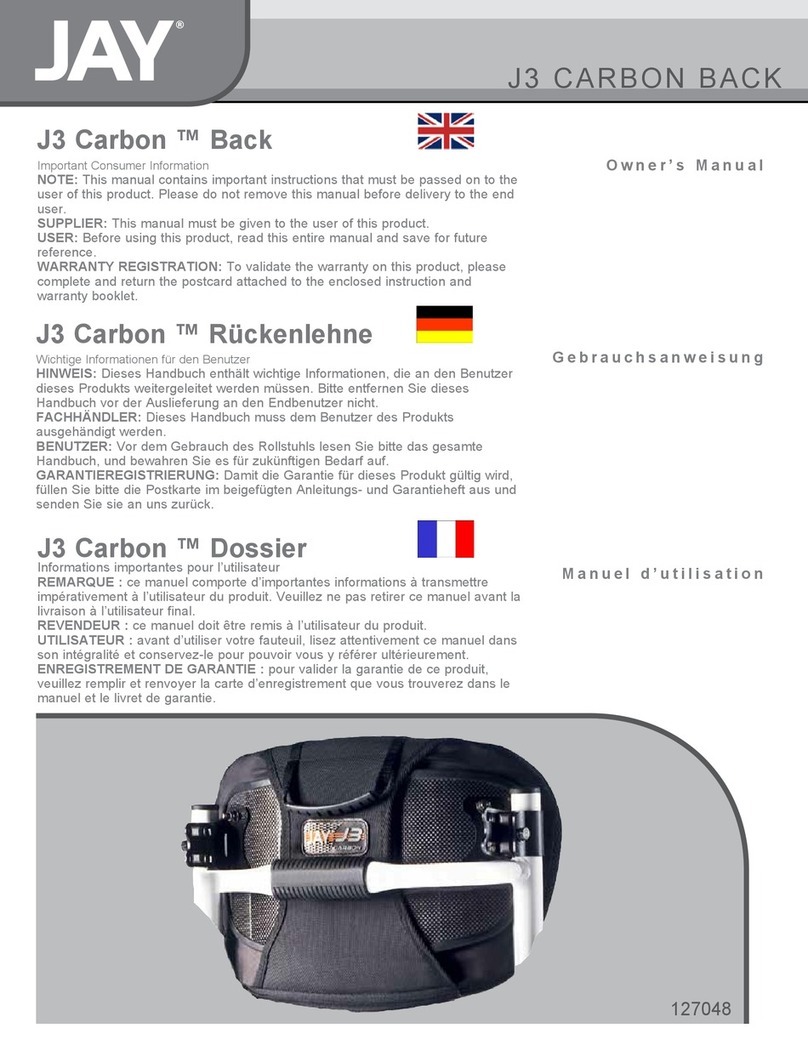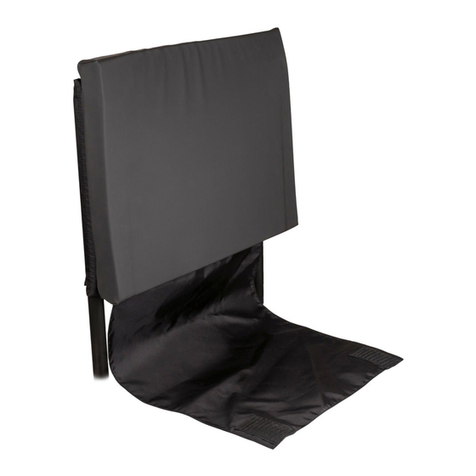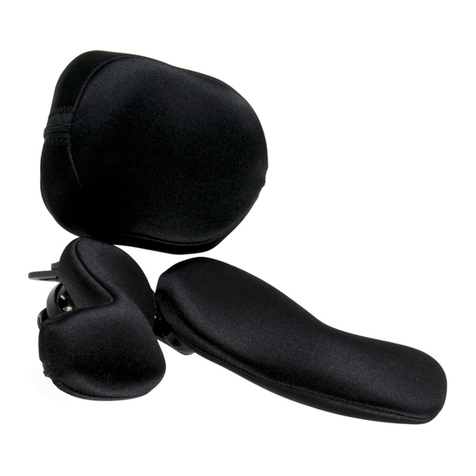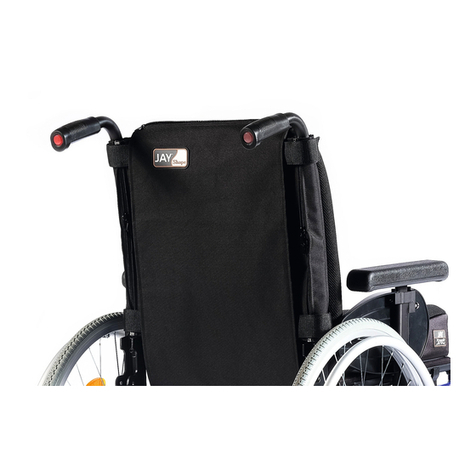
103721 Rev. E 6
ENGLISH
INSTALLATION
INSTALLING THE MOUNTING HARDWARE
Please read the following instructions before beginning installation.
To install the 3 Back, it is best to begin without a user in the
wheelchair. Once the back has been installed and minor adjust-
ments are needed the user can be seated back in the wheelchair.
T
ools required (included with J3 Back)
• 4mm hex key
•10mm box end wrench
Hardware Installation Instructions (Figs. 3, 4, 5)
1. Remove the existing wheelchair back according to the
wheelchair manufacturer’s instructions.
2. Visually determine the desired location of the receivers on
the wheelchair’s back canes. The mounting hardware should
be at approximately equal heights on each back post (Fig. 3)
and parallel to the seat frame (Fig. 4). Higher locations on the
back canes are generally better.
3. Attach the hardware receivers. (Fig. 5)
a. Loosen the clamp screws (A) with the enclosed 4mm hex
key. NOTE– For large tube diameters, clamp screws may
have to be removed completely.
b. Attach and align receiver to the wheelchair back canes (B).
c. Hand tighten clamp screws (A). NOTE– Receivers may
require additional lateral adjustment to ensure proper
alignment.
Attaching and Aligning the J3 Back Shell (Fig. 6)
a. Loosen bracket nuts (C) and mounting pin bolts (F) using
10mm box-end wrench until hardware can move easily in
all directions.
b. Attach the 3 Back to the hardware receivers by inserting
left and right mounting pins (D) in the left and right
receivers (E).
c. Locate back to the approximate location, relative to both
chair and user.
d. Tighten bolts on the inside of the mounting pin (F). The
recommended torque specification is 100 - 110 in-lbs.
(11.3 - 12.4 Nm). NOTE– Back depth and angle may
require additional adjustment to ensure proper fit to the
user.
e. Tighten bracket nuts (C). The recommended torque
specification is 75 - 85 in-lbs. (8.5 - 9.3 Nm). NOTE–
Back height may require additional adjustment to ensure
proper fit to the user.
f. Test back release by pressing the release levers forward
and removing the back off the chair. (See Removal and
Replacement section for further details.) Proper align-
ment of the mounting hardware and back is achieved
when smooth attachment and release can be easily done.
g. If proper alignment has not been achieved, adjust the
components until properly aligned.
h. Once properly aligned, tighten the hardware receiver
clamp screws. The recommended torque specification is
75 - 85 in-lbs (8.5 - 9.3 Nm).
Figure 3
Figure 4
Figure 5
parallel
A
B
C
height width
E
D
Figure 6
F
